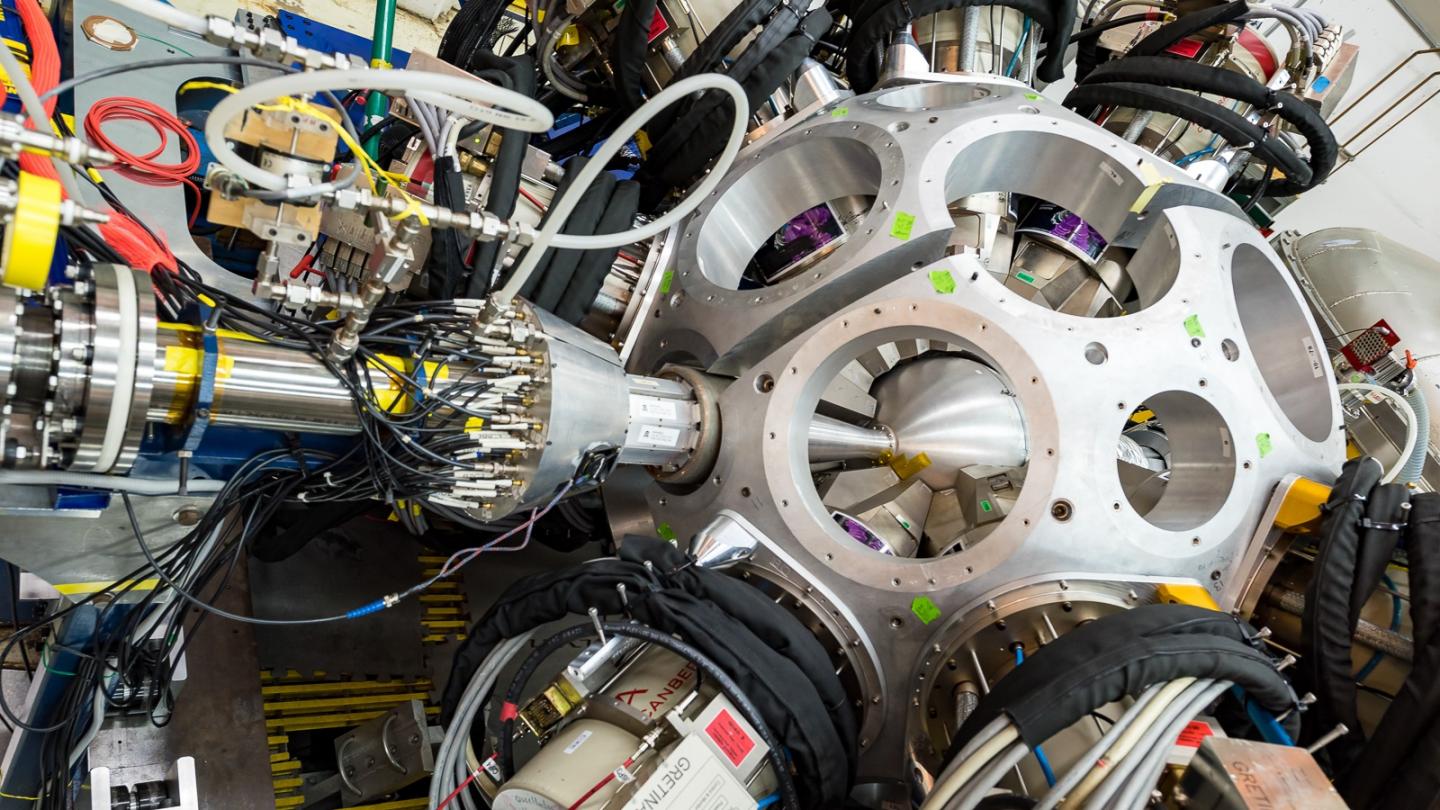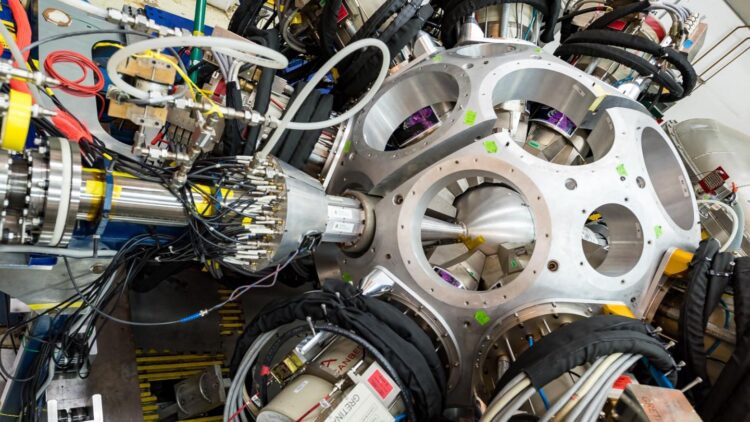
Credit: Argonne National Laboratory
Analysis of meteorite content has been crucial in advancing our knowledge of the origin and evolution of our solar system. Some meteorites also contain grains of stardust. These grains predate the formation of our solar system and are now providing important insights into how the elements in the universe formed.
Working in collaboration with an international team, nuclear physicists at the U.S. Department of Energy’s (DOE’s) Argonne National Laboratory have made a key discovery related to the analysis of “presolar grains” found in some meteorites. This discovery has shed light on the nature of stellar explosions and the origin of chemical elements. It has also provided a new method for astronomical research.
“Tiny presolar grains, about one micron in size, are the residue from stellar explosions in the distant past, long before our solar system existed,” said Dariusz Seweryniak, experimental nuclear physicist in Argonne’s Physics division. The stellar debris from the explosions eventually became wedged into meteorites that crashed into the Earth.
“In turn, we were able to calculate the ratios of various sulfur isotopes produced in stellar explosions, which will allow astrophysicists to determine whether a particular presolar grain is of nova or supernova origin.” — Dariusz Seweryniak, experimental physicist in the Physics division
The major stellar explosions are of two types. One called a “nova” involves a binary star system, where a main star is orbiting a white dwarf star, an extremely dense star that can be the size of Earth but have the mass of our sun. Matter from the main star is continually being pulled away by the white dwarf because of its intense gravitational field. This deposited material initiates a thermonuclear explosion every 1,000 to 100,000 years, and the white dwarf ejects the equivalent of the mass of more than thirty Earths into interstellar space. In a “supernova,” a single collapsing star explodes and ejects most of its mass.
Nova and supernova are the sources of the most frequent and violent stellar eruptions in our Galaxy, and for that reason, they have been the subject of intense astronomical investigations for decades. Much has been learned from them, for example, about the origin of the heavier elements.
“A new way of studying these phenomena is analyzing the chemical and isotopic composition of the presolar grains in meteorites,” explained Seweryniak. “Of particular importance to our research is a specific nuclear reaction that occurs in nova and supernova — proton capture on an isotope of chlorine — which we can only indirectly study in the lab.”
In conducting their research, the team pioneered a new approach for astrophysics research. It entails use of the Gamma-Ray Energy Tracking In-beam Array (GRETINA) coupled to the Fragment Mass Analyzer at the Argonne Tandem Linac Accelerator System (ATLAS), a DOE Office of Science User Facility for nuclear physics. GRETINA is a state-of-the-art detection system able to trace the path of gamma rays emitted from nuclear reactions. It is one of only two such systems in the world.
Using GRETINA, the team completed the first detailed gamma-ray spectroscopy study of an astronomically important nucleus of an isotope, argon-34. From the data, they calculated the nuclear reaction rate involving proton capture on a chlorine isotope (chlorine-33).
“In turn, we were able to calculate the ratios of various sulfur isotopes produced in stellar explosions, which will allow astrophysicists to determine whether a particular presolar grain is of nova or supernova origin,” said Seweryniak. The team also applied their acquired data to gain deeper understanding of the synthesis of elements in stellar explosions.
The team is planning to continue their research with GRETINA as part of a worldwide effort to reach a comprehensive understanding of nucleosynthesis of the elements in stellar explosions.
###
Physical Review Letters published the team’s paper, “Search of Nova Presolar Grains: γ-ray Spectroscopy of 34Ar and Its Relevance for the Astrophysical 33Cl(p, γ) reaction,” in June 2020.
In addition to Seweryniak, authors include A.R.L. Kennington, G. Lotay, D.T. Doherty, C. Andreoiu, K. Auranen, M.P. Carpenter, W.N. Catford, C.M. Deibel, K. Hadynska-Klek, S. Hallam, D. Hoff, T. Huang, R.V.F. Janssens, S. Jazrawi, J. José, F.G. Kondev, T. Lauritsen, J. Li, A.M. Rogers, J. Saiz, G. Savard, S. Stolze, G.L. Wilson, and S. Zhu. Participating research institutions include the University of Surrey (UK), University of York (UK), Simon Fraser University (Canada), Louisiana State University (US), University of North Carolina (US), Duke University (US), Universitat Politècnica de Catalunya (Spain), and Institut d’Estudis Espacials de Catalunya (Spain).
This research was supported by the DOE Office of Science.
Argonne National Laboratory seeks solutions to pressing national problems in science and technology. The nation’s first national laboratory, Argonne conducts leading-edge basic and applied scientific research in virtually every scientific discipline. Argonne researchers work closely with researchers from hundreds of companies, universities, and federal, state and municipal agencies to help them solve their specific problems, advance America’s scientific leadership and prepare the nation for a better future. With employees from more than 60 nations, Argonne is managed by UChicago Argonne, LLC for the U.S. Department of Energy’s Office of Science.
The U.S. Department of Energy’s Office of Science is the single largest supporter of basic research in the physical sciences in the United States and is working to address some of the most pressing challenges of our time. For more information, visit https:/
Media Contact
Diana Anderson
[email protected]
Original Source
https:/
Related Journal Article
http://dx.





